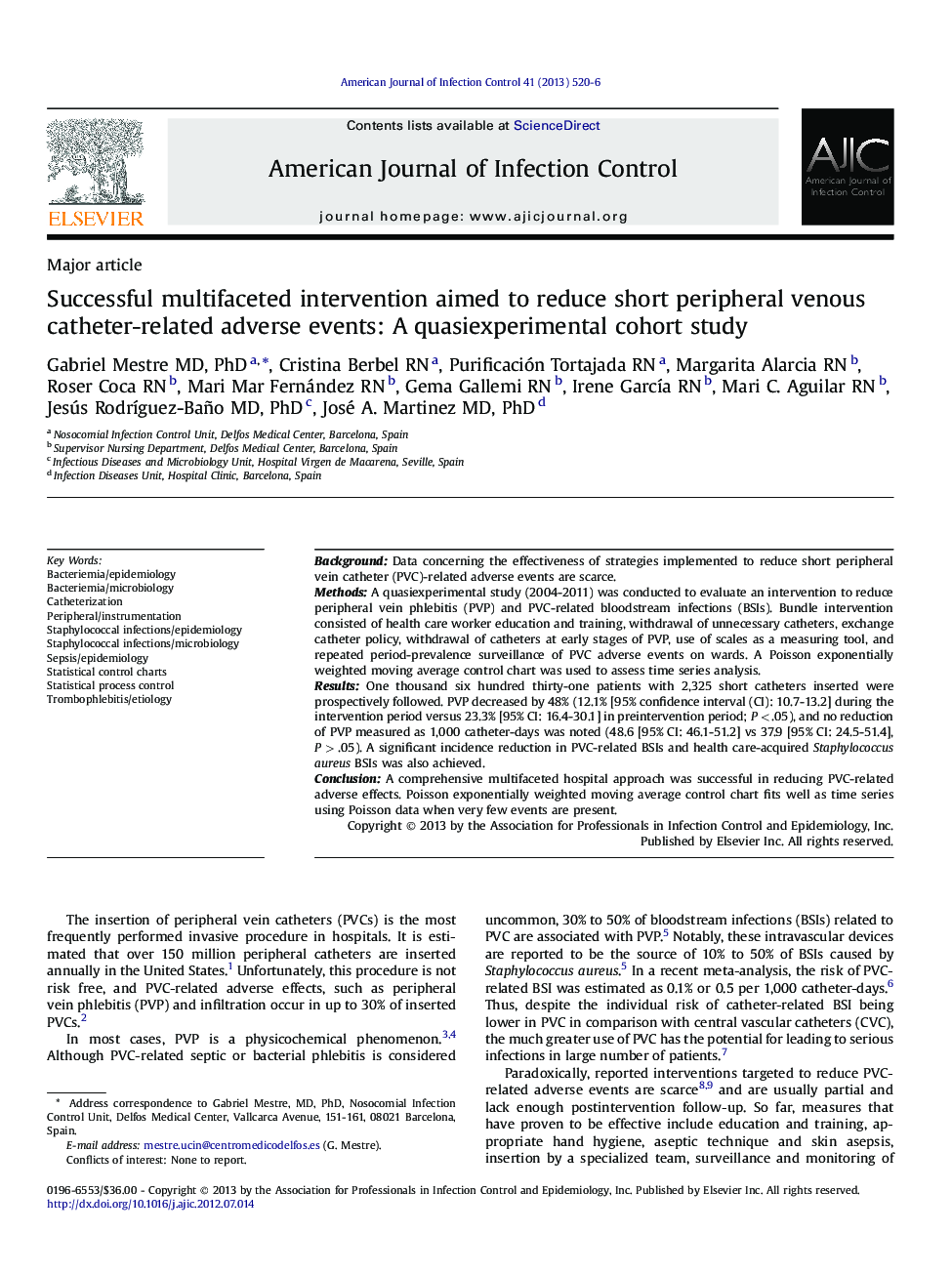| Article ID | Journal | Published Year | Pages | File Type |
|---|---|---|---|---|
| 2639829 | American Journal of Infection Control | 2013 | 7 Pages |
BackgroundData concerning the effectiveness of strategies implemented to reduce short peripheral vein catheter (PVC)-related adverse events are scarce.MethodsA quasiexperimental study (2004-2011) was conducted to evaluate an intervention to reduce peripheral vein phlebitis (PVP) and PVC-related bloodstream infections (BSIs). Bundle intervention consisted of health care worker education and training, withdrawal of unnecessary catheters, exchange catheter policy, withdrawal of catheters at early stages of PVP, use of scales as a measuring tool, and repeated period-prevalence surveillance of PVC adverse events on wards. A Poisson exponentially weighted moving average control chart was used to assess time series analysis.ResultsOne thousand six hundred thirty-one patients with 2,325 short catheters inserted were prospectively followed. PVP decreased by 48% (12.1% [95% confidence interval (CI): 10.7-13.2] during the intervention period versus 23.3% [95% CI: 16.4-30.1] in preintervention period; P < .05), and no reduction of PVP measured as 1,000 catheter-days was noted (48.6 [95% CI: 46.1-51.2] vs 37.9 [95% CI: 24.5-51.4], P > .05). A significant incidence reduction in PVC-related BSIs and health care-acquired Staphylococcus aureus BSIs was also achieved.ConclusionA comprehensive multifaceted hospital approach was successful in reducing PVC-related adverse effects. Poisson exponentially weighted moving average control chart fits well as time series using Poisson data when very few events are present.
